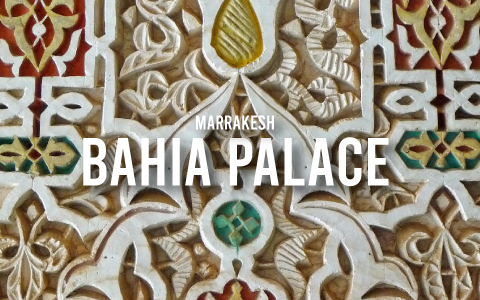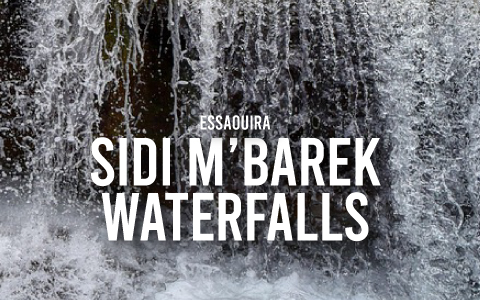
Discovering The Magnificence Of Bahia Palace In Marrakesh
In the vibrant city of Marrakesh, amidst its bustling streets and lively markets, lies different examples of Moroccan architecture and history – the Koutoubia Mosque, the Saadian Tombs and the Bahia Palace. This Palace stands as a magnificent symbol of the country’s rich cultural heritage, attracting visitors from around the world to marvel at its intricate craftsmanship and breathtaking beauty.
A Glimpse into History of Bahia Palace
Between 1866 and 1867, the northern part of this vast 8,000 sq. m. palace was built southeast of the Medina of Marrakesh, on the north side of the Mellah (the Jewish ghetto), near the royal palace, by architect Muḥammad al-Makkī on the commission of Si Musa, a former slave turned vizier to Sultan Ḥasan I.
Later expanded by his successor, Sultan Abdelaziz, Bahia Palace served as the residence of the ruling elite during the era of the Moroccan sultans. Its name, Bahia, meaning “brilliance,” perfectly encapsulates the palace’s allure, characterized by its stunning architecture, lush gardens, and exquisite interior decorations.
The Architectural Marvels of Bahia Palace
As you step through the ornate entrance of Bahia Palace, you are immediately enveloped in a world of architectural splendor. The palace’s design reflects a fusion of Moroccan and Andalusian influences, boasting intricately carved wooden ceilings, colorful mosaic tiles, and delicately carved stucco work adorning its walls.
The sprawling complex is comprised of numerous courtyards, halls, and chambers, each offering a unique glimpse into the palace’s rich history and cultural significance. You can wander through the opulent reception rooms, adorned with dazzling chandeliers and ornate furnishings, or explore the tranquil inner gardens, filled with lush vegetation, trickling fountains, and fragrant orange trees.
Beyond its architectural beauty, Bahia Palace holds profound symbolism within Moroccan culture. It was intended to showcase the wealth and power of its owners, serving as a statement of prestige and authority during a pivotal period in Moroccan history. The intricate designs and motifs found throughout the palace often carry symbolic meanings, representing themes of spirituality, nature, and prosperity.
Exploring the Palace Grounds
The palace is divided into buildings built in a seemingly haphazard pattern around several courtyards where orange and banana trees, cypress trees, hibiscus plants, and jasmine can be found. The gardens are interposed between the rooms, stables, mosques, and ḥammām that make up the complex.
These gardens are one of the highlights of a visit to Bahia Palace. Spanning over eight acres, they are a serene oasis within the bustling city, offering respite from the chaos of urban life. Visitors can meander along shaded pathways, marvel at the vibrant flora, and relax amidst the tranquil surroundings, soaking in the beauty and serenity of this enchanting sanctuary.
Main attractions of Bahia Palace
Let’s list some of the main attractions to visit besides the gardens.
- Reception Halls: The palace features several opulent reception halls, each adorned with dazzling chandeliers, intricate woodwork, and colorful tile mosaics. These grand halls were once used for hosting important guests and ceremonial events, and their ornate décor offers a glimpse into Morocco’s imperial past.
- Chamber of the Four Seasons: One of the most exquisite rooms in Bahia Palace is the Chamber of the Four Seasons, known for its stunning cedar wood ceiling adorned with intricate carvings and geometric patterns. The room is named for the four seasons depicted in the colorful zellij tile work on the walls, showcasing the palace’s fine craftsmanship and attention to detail.
- Harem Courtyard: Another highlight of Bahia Palace is the Harem Courtyard, an intimate space surrounded by ornately carved wooden screens and marble columns. This secluded area was once reserved for the sultan’s wives and concubines and offers a glimpse into the private lives of Morocco’s ruling elite.
Bahia Palace also houses a collection of historical artifacts and artwork, including ornate furnishings, textiles, and ceramics. These items provide further insight into the palace’s history and the lives of its former inhabitants, offering a fascinating glimpse into Morocco’s royal past.
Bahia Palace, a Way for Preserving Morocco’s Heritage
In addition to its historical and cultural significance, Bahia Palace plays a crucial role in preserving Morocco’s architectural heritage. Efforts to conserve and restore the palace have been ongoing, ensuring that future generations can continue to appreciate its beauty and significance for years to come.
Visitors to Bahia Palace are not only treated to a visual feast of exquisite architecture and design but also gain insight into Morocco’s rich cultural tapestry and the legacy of its imperial past. Whether strolling through the ornate chambers, admiring the intricate craftsmanship, or simply basking in the tranquil beauty of the gardens, a visit to Bahia Palace is an unforgettable experience that offers a glimpse into the splendor of Morocco’s royal history.



